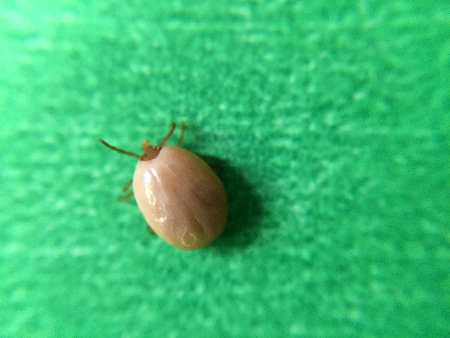 Ticks, like the engorged specimen shown here, can transmit many different diseases. Photo Credit: NIAID Ticks, like the engorged specimen shown here, can transmit many different diseases. Photo Credit: NIAID
Epidemiology
NIH Seeking Input on Tickborne Disease Research Priorities Tickborne diseases are a serious and growing public health problem in the United States, with ticks transmitting at least 20 different infectious diseases, including Lyme disease, Rocky Mountain spotted fever, babesiosis, and Powassan virus. Lyme disease represents the bulk of reported tickborne infections in the U.S. with more than 30,000 cases reported each year, according to the CDC. However, it is estimated that the actual incidence of Lyme disease is 10 times greater. To address this growing threat, the NIH is developing a strategic plan to advance tickborne disease research and development. The strategic plan is being developed in response to recommendations from the Tick-borne Disease Working Group, a federal advisory committee established by Congress comprising physicians, researchers, patient advocates, and government representatives—including those from NIH. The Working Group issued its first report to Congress in 2018 and recommended that NIH develop a strategic plan to coordinate research funding, increase knowledge of pathogenesis, improve diagnosis, and develop and evaluate new therapeutics for tickborne diseases. As a proposed framework for the strategic plan, NIH has identified five areas of research priority: Basic Research — Research on microbial, host, and reservoir factors (and their interactions) that contribute to tickborne disease pathobiology and immunity/immunomodulation in humans or maintain pathogens in sylvatic cycles (the pathogen transmission cycle between wild animals and hosts); Diagnosis and Detection — Develop/improve diagnostics, including diagnostics to detect early and acute infection, predict treatment outcomes (identify those more likely to develop post-treatment sequelae), or demonstrate treatment success; Prevention — Develop safe and effective vaccines, identify immune correlates of protection, and develop approaches to interrupt pathogen transmission/survival in ticks and reservoirs; Therapeutics — Develop/improve therapeutic regimens to treat tickborne diseases and their complications and conduct research on mechanisms responsible for treatment failure; and Resources — Characterize existing reservoir, vector and host animal models and develop new models, assays, reagents, genomic resources, and data-sharing platforms. A new NIH Request for Information invites comments and suggestions from stakeholders throughout the scientific research, advocacy, and clinical practice communities, and the general public on the tickborne disease research priorities NIH should continue or adopt over the coming years. For details, please see https://grants.nih.gov/grants/guide/notice-files/NOT-OD-19-077.html NIH encourages organizations (e.g., patient advocacy groups, professional organizations) to submit a single response reflective of the views of the organization/membership as a whole. NIH looks forward to receiving input as it develops its strategic plan. Questions can be sent to: [email protected] Source: niaid.nih.gov |
Healthcare professionals receiving our publications are invited to contact us about ideas for future editions and editorial submissions by emailing [email protected] or calling 813-286-8444
© 2024 Capital Publishing Inc - All Rights Reserved


